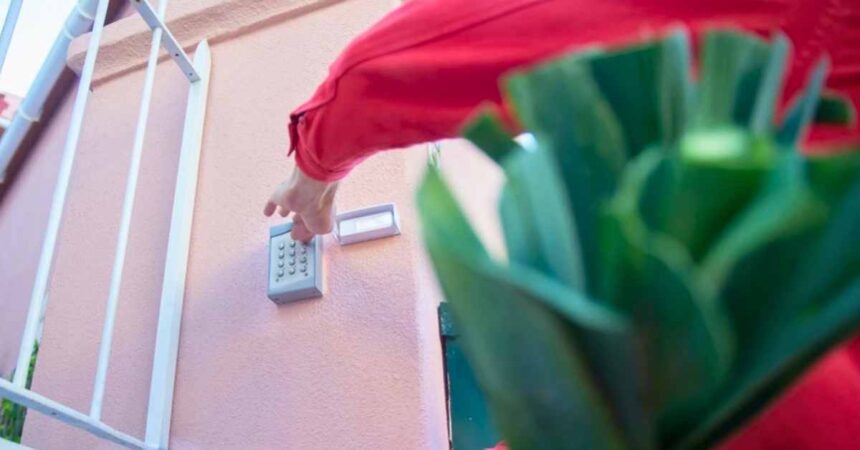Alarm monitoring, the centralised service that receives signals from security systems and dispatches appropriate responses, has evolved from basic telephone-based call centres in the 1970s to sophisticated, AI-driven platforms that integrate video verification, Internet of Things (IoT) sensors, and cloud analytics.
In 2024, the global alarm monitoring market was valued at around $58.4 billion, with projections indicating it will reach $106.6 billion by 2032, growing at a CAGR of 7.8% (Fortune Business Insights, 2024). This growth is driven by urbanisation, rising property crime rates in certain regions and the convergence of physical and cyber security.
This analytical article examines the technological foundations, market dynamics, competitive landscape, regulatory environment, and emerging challenges of modern alarm monitoring.
Historical context and technological evolution
The modern alarm monitoring industry can be traced back to the 1870s, when Edwin Holmes invented the first electromagnetic burglar alarm. However, centralised monitoring only became viable after telephone lines were widely adopted. By the 1950s, companies such as ADT (founded as American District Telegraph in 1874) had set up specialised central stations to receive alarm signals via dedicated phone lines.
The digital revolution of the 1990s introduced dual-path communication, which dramatically reduced false dispatches caused by cut landlines. The 2010s saw the rise of interactive services, such as Alarm.com and Telguard, which allowed users to arm and disarm systems remotely via smartphone apps. Today, the industry is undergoing another transformation, this time driven by three core technologies.
- Artificial Intelligence and Video Analytics Traditional motion sensors trigger 98% of false alarms (Urban Institute, 2023). AI-based video verification systems, developed by companies such as AngelSense and Deep Sentinel, use computer vision technology to distinguish between humans, animals and environmental factors. These systems can now reduce false alarms by up to 95% (SSI Industry Report, 2024).
- Internet of Things (IoT) Integration Modern alarm monitoring has evolved to encompass not only burglary, but also environmental sensors (e.g. smoke, carbon monoxide and flood detectors) and smart home ecosystems. Platforms such as Qolsys and Resideo’s Total Connect aggregate data from thousands of devices to create unified threat profiles.
- Cloud-Based Central Stations Legacy central stations relied on physical hardware racks. In contrast, cloud platforms such as AvantGuard’s Stages and Bold Group’s ManitouNEO enable unlimited scalability, geographic redundancy and real-time data sharing across multiple stations.

Market Segmentation and Growth Drivers
The alarm monitoring market can be segmented into:
- Residential (58% market share): Driven by DIY systems (Ring, SimpliSafe) and professional installation (ADT, Vivint).
- Commercial (32%): Large enterprises favor customized solutions with access control integration.
- Industrial & Government (10%): High-security environments require UL 827-listed stations and stringent cybersecurity compliance.
North America dominates the market with a 42% revenue share, followed by Europe and the Asia-Pacific region. The Asia-Pacific region is experiencing growth (CAGR 9.2%), driven by rapid urbanisation in India and China, where middle-class households are installing monitored systems for the first time.
The key growth drivers are:
- Receive insurance discounts of up to 20% on your premium for monitored systems.
- The ageing population is demanding the integration of medical alerts.
- Smart city initiatives that incorporate gunshot detection and public space monitoring.
competitive landscape
Despite consolidation, the industry remains fragmented. The top five players control around 45% of the global market.
- ADT Inc. – 6.5 million subscribers, leveraging 150-year brand trust.
- Securitas Direct (Verisure) – Dominant in Europe with 4+ million customers.
- Vivint Smart Home – Focus on proprietary equipment and AI-driven automation.
- Johnson Controls (Silent Knight, DSC) – Strong in commercial fire monitoring.
- Sector Alarm & G4S – Regional leaders in Scandinavia and UK.
A notable trend is the divergence between dealer-based models (wholesale monitoring by COPS, United Central Station) and direct-to-consumer platforms (SimpliSafe Select, Ring Protect Pro). The latter sacrifice margin for customer ownership but achieve higher valuations—SimpliSafe was valued at $10 billion in 2024 despite lower ARPU.
Regulatory and Standards Framework
In the United States, alarm monitoring is governed by:
- UL 827 (central-station facilities)
- NFPA 72 (fire alarm signaling)
- ASME A17.1 (elevator emergency communication)
The industry also has to contend with false-alarm ordinances. Cities such as Los Angeles and Salt Lake City impose fines of more than $200 for each false police dispatch, thereby incentivising the use of verified response technologies.
The EN 50518 standard in Europe is stricter, requiring dual data centres and a 15-minute response time from operators. In order to comply with the GDPR, monitoring companies must anonymise personal data in video clips before sharing them with law enforcement.
Cybersecurity: The Emerging Threat Vector
As monitoring migrates to IP-based communication, cyber vulnerability has become the biggest risk by far. The Verkada breach of 2023 exposed live feeds from 150,000 cameras, highlighting weaknesses in default credentials and firmware updates.
Leading providers are now implementing:
- End-to-end encryption (AES-256).
- Two-factor authentication for dealer portals.
- Zero-trust architecture for cloud platforms
In 2022, the TMA (The Monitoring Association) launched its Cybersecurity Committee and published the AVS-01 standard for secure alarm signal transmission — the industry’s first ANSI-accredited cybersecurity standard.
economic model analysis
Alarm monitoring operates on a recurring revenue model with high gross margins (65–80%), but there are significant customer acquisition costs involved ($1,200–$2,500 per account). Lifetime value calculations usually assume a tenure of 7–10 years and recurring monthly revenue (RMR) of $45–$65.
Attrition remains the key metric. The industry average hovers at 11–13% annually, but top performers such as Rapid Response and Guardian Protection achieve a figure below 8% by using predictive analytics to flag accounts at risk based on payment patterns and frequency of service calls.
Сhallenges and criticisms
Despite its growth, the industry still faces structural challenges.
- Commoditization of Basic Monitoring $15/month wholesale rates have compressed margins for independent central stations.
- Police Response Fatigue Over 90% of alarm activations are false. Departments in Las Vegas, Denver, and Toronto now require video or audio verification before dispatching.
- Privacy Concerns Continuous video recording in homes raises ethical questions, especially when footage is stored indefinitely in the cloud.
- Technological Obsolescence 4G sunsets scheduled for 2030 will render millions of older cellular communicators obsolete, forcing costly upgrades.
Future Outlook (2025–2035)
Several transformative trends are on the horizon:
- AI Guard Tour Replacement Deep Sentinel and Noonlight already offer live guards who intervene verbally via two-way cameras, reducing physical guard costs by 70%.
- Drone-First Response Companies like Nightingale Security and Sunflower Labs deploy autonomous drones that reach properties in under 90 seconds.
- Blockchain for Alarm Signal Integrity Pilot projects (SecureAlarm, Immix) use distributed ledgers to prevent signal spoofing.
- Integration with Wearable Panic Buttons Medical-alert pendants with fall detection and GPS will merge with home security platforms.
- Decentralized Monitoring Blockchain and edge computing may enable peer-to-peer verification networks, reducing reliance on traditional central stations.
Conclusion
Alarm monitoring has progressed from simple bell-ringing devices to intelligent, predictive systems that prevent incidents rather than merely reacting to them. However, the industry is at a crossroads: should it continue to consolidate around a handful of national players offering bundled smart home services, or should it foster an ecosystem of specialised providers focusing on specific sectors such as healthcare, education, and logistics?
The winners will be those who strike the right balance between technological innovation and unwavering reliability — because when an alarm sounds, every second counts and trust is paramount. As urbanisation accelerates and cyber-physical threats increase, alarm monitoring will remain a cornerstone of public safety — provided the industry can adapt faster than the risks it aims to mitigate.






